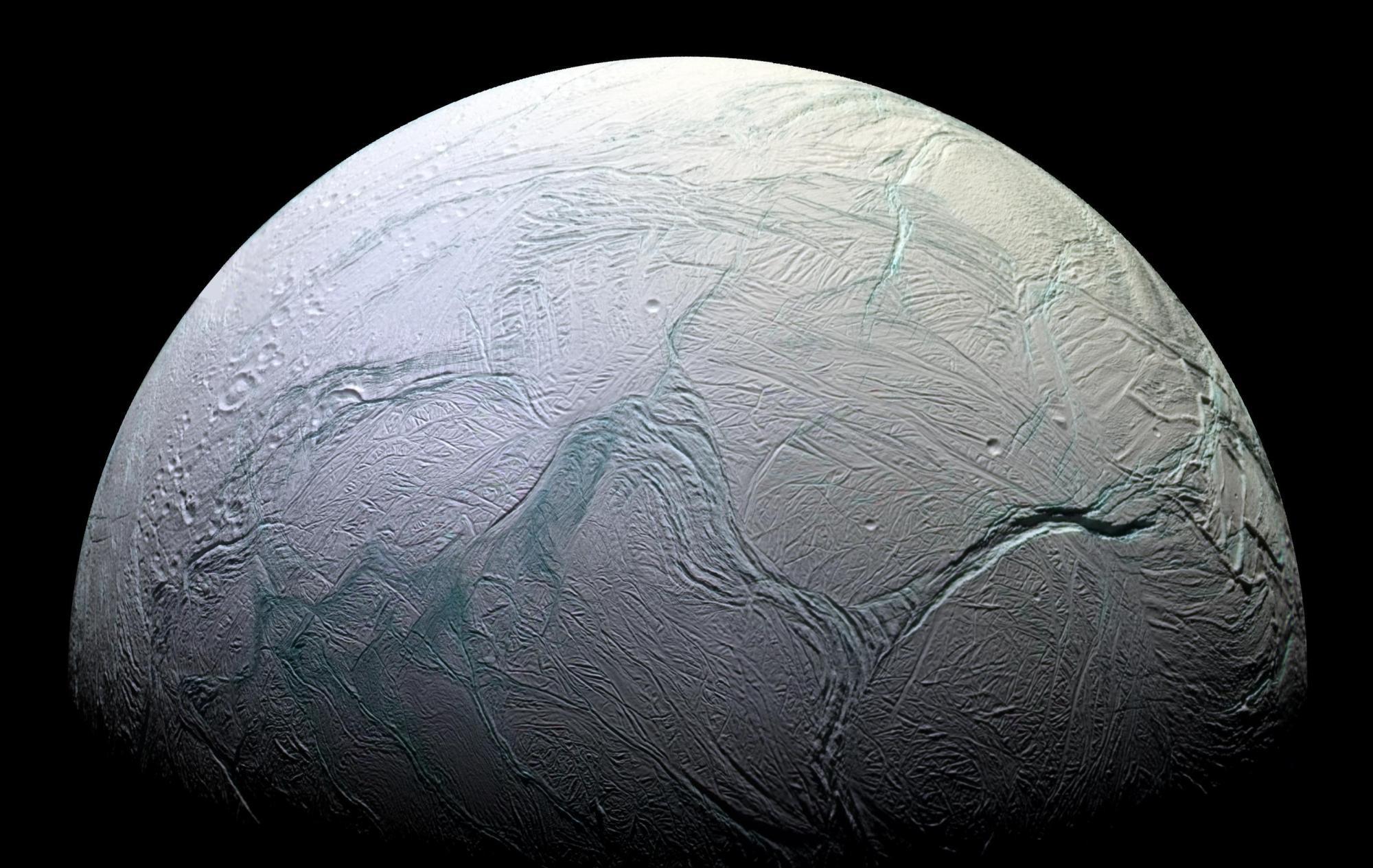[ALENG self-media] On the evening of December 10, there are too many unsolved mysteries in the solar system waiting for human beings to study, among which Saturn's second moon, Enceladus, is a celestial body full of mysterious phenomena. Through astronomical observations, it was found that this celestial body that is believed to exist in an underground ocean, the frozen surface of its Antarctic region, neatly distributed with some mysterious stripes like "tiger stripes", their length is about 130 kilometers, and the distance between them is about 35 kilometers, which looks unconventional and does not seem to be naturally formed, so what are these mysterious "tiger stripes"? Exactly how they came to be, now, scientists have a new explanation.

Enceladus
Enceladus is Saturn's second moon and saturn's 6th largest moon, and according to photographs taken by Voyager, Enceladus is about 500 kilometers in diameter, and since its surface is covered by a thick layer of ice, Enceladus is almost the brightest moon in the solar system, and in voyager's camera eyes, the cold and frozen planet seems to have some fantastical feeling. In 2005, NASA's Cassini probe flew over the satellite several times, and by September 2015, the Cassini probe had discovered the presence of a huge geothermal fountain in Enceladus' Antarctic region, a discovery that made Enceladus a popular target for possible extraterrestrial life in the solar system.
Enceladus Antarctica's "tiger stripe"
However, with the continuous data from the Cassini probe, the mystery of Enceladus's possible extraterrestrial life has yet to be solved, and a new mystery has yet to be solved: Cassini's photographs of Enceladus show that there are some mysterious stripes on the surface of the satellite, which are only 500 kilometers in diameter, which look like "tiger stripes" on tigers, and they are all about the same length, about 130 kilometers, and the distance between them is almost equal, about 35 kilometers. Exactly how these mysterious stripes are formed has long been an unsolved mystery in the astronomical world.
Geothermal fountain on the surface of Enceladus
According to a december 10 research paper published in the journal Nature Astronomy, the scientists found that these mysterious stripes were actually cracks after the ice on Enceladus' surface had ruptured. When the ice breaks for some reason, the sea water below gushes out, forming ice around the crack, and as the accumulated ice pick grows larger, its own weight causes the ice layer 35 kilometers away to break again. Scientists say that this process has been repeated on the surface of Enceladus, so it will form stripes of similar length and distance. So why do these "tiger stripes" only appear intensively in Enceladus' Antarctic region and not elsewhere? Max Rudolph of the University of California, Davis, said that because the ice layer in the polar regions of Enceladus is relatively thin due to the huge gravitational pull of Saturn, and in the Antarctic region, the thickness of the ice is even thinner than that of the North Pole, so these "tiger stripes" appear in the South Pole of Enceladus.
The results of this study explain the formation of mysterious stripes on Enceladus' surface very well, and at the same time, the results of the study are also of great significance for future landing exploration, because with the support of this conclusion, future human probes should land in Enceladus's Antarctic region, where the seawater under Enceladus can be found without a huge amount of engineering, which can be called the gate of extraterrestrial life of Enceladus. However, there are no project plans for Enceladus' exploration, and the most recent similar project is aimed at Titan, which is expected to launch a lander to Titan in the mid-2020s and release multiple drones to detect Titan, because Titan is also an object that is thought to have some strange life form.